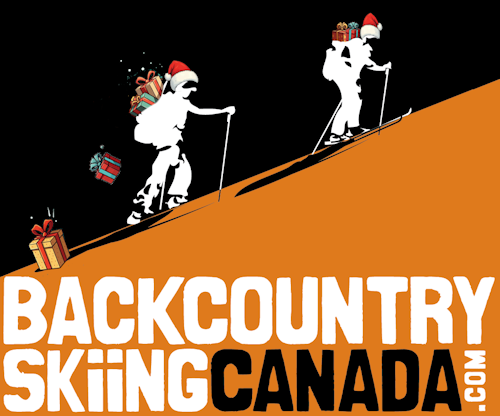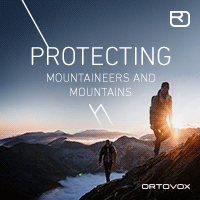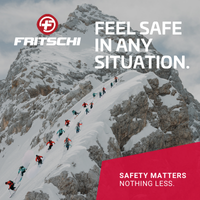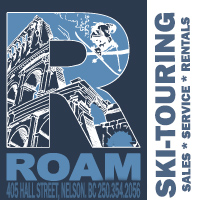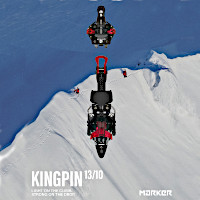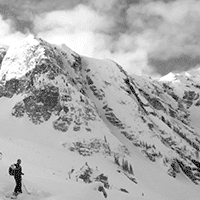Dig Deeper - the real issue
A very thorough article by our good friends at BCA on the importance knowing how to use your beacon efficiently:
Introduction
People are people. They are not numbers. To find out what the real issues are in avalanche rescues, wemust go beyond statistics and speak directly to theselect group of people who have actually had anavalanche transceiver in their hands during real, liveavalanche rescues. This is what we have done in parttwo of our ongoing research on multiple burials. Ourfindings: in real multiple burial situations, it’s notabout beacon searching; it’s about shoveling. This iswhat avalanche educators should be teaching in theircourses, along with organization, basic beaconsearching, probing, avalanche escape strategies andairbag use.
Part one of our research included statistical studies inNorth America and Tyrol, Austria by Bruce Edgerlyand Dieter Stopper, respectively, who shared theservices of consulting computer scientist, Jon Mullen.Both of these studies were published last season inThe Avalanche Review, independently concludingthat “special case” close-proximity multiple burials areextremely rare—and often overstated by beaconmanufacturers. Since then, several other reportshave been published, including a study by Frenchavalanche researcher Frédéric Jarry. He cites Swissresearcher Manuel Genswein’s suggestion that atleast two shovelers are recommended per buriedvictim for that person to stand a chance at survival.But according to Jarry, very few recreational groupshave that kind of manpower. In the absence ofshoveling manpower, he argues, then advancedtechniques (and technology) for complicated multipleburials are a distraction from the real issue:shoveling. Sooner or later, Jarry concludes, it’snecessary to start digging!
No matter where the statistics come from—researchers or beacon manufacturers, North Americaor Europe—they’re still only statistics. They are notcapable of telling the real story. An avalanche debrispile is not the place for creative statistics and “ivorytower” thinking. It is a place for grim reality. Everyavalanche incident is as unique as the peopleinvolved. This is why in part two of our research wehave chosen to “dig deeper” and speak to thoseindividuals who have actually performed a multiplevictimtransceiver search in the field.
 |
For the victim to have a reasonable chance of survival, there should be at least two shovelers for each buried victim. Most recreational groups don’t have that kind of manpower, according to Jarry. (Photo by Bruce Edgerly) |
Statistical Review
According to the American Avalanche Association incidents database (www.avalanche.org), from 1995 through April 2008, just 14 percent (45 incidents) ofroughly 300 complete burial incidents involved multiplevictims. Of these 297 confirmed complete burial incidents, just 5 percent (15 incidents) involved multiple victim beacon searches.

Of these same 297 incidents, just 1.7 percent (5incidents) involved close–proximity multiple burials, wherea special technique (or technology) could have beenapplied. Normally, a multiple burial can be solved with common sense, by searching for the victims “in series” or“in parallel,” using the same techniques that are used insingle burials. Only in “special case” multiple burials would a special technique or technology come into play.These involve cases where two or more completely buried victims are within roughly 10 meters of eachother (close enough so their signals are hard to differentiate)–and where there is adequate manpower so some rescuers can start digging whilethe best searcher continues with the beacon search.These low percentages are a significant departure from a 2002 Swiss study which asserted that 60percent of avalanche victims were involved inmultiple burials. They also strongly contradict arecent printed statement from a German beacon manufacturer that “about 50 percent of all reported avalanche accidents involve two or more personswith interfering signals.”
 |
In most cases, the technique for a multiple–victim transceiver search is the same technique that is used for a single victim search. By moving systematically through the debris, a digital transceiver will isolate each signal as the searcher gets closer. Only in special cases involving closeproximity burials—and adequate manpower—should this technique change. (Photo by Simon Fryer) |
Digging Deeper: Rescuer Interviews
We began “digging deeper” by contacting membersof the 15 parties in which multiple-victim beacon searches were actually performed. In addition, we contacted members of parties in which at least two people were reported killed from 1995 to 2008 onwww.avalanche.org. The objective was to make sure these were captured in our research and to get “worst case” feedback from the field. This added up toroughly 35 incidents that we investigated through interviews with actual rescuers, coroners, search–andrescueteams, and/or other witnesses.
To get a big–picture view of the entire rescue process, we asked the following questions to each person that wecontacted:
- How many victims were completely buried with no surface clues?
- How deep were they buried?
- How far apart were they buried?
- Did you perform signal triage to prioritize those victims most likely to survive?
- Did the victim(s) die from asphyxia, trauma, or some other means?
- Was there a last–seen–area?
- Did you perform a primary/signal search?
- Was there any confusion from interfering beacon signals?
- What beacon search techniques were used: searching in series, searching in parallel, micro search strips, the Three-Circle Method, Special mode, “marking?”
- Did you turn off the victim’s beacon after pinpointing him/her?
- What technique was used for excavating the victims?
- How much time was spent searching versus shoveling?
- What was the most time–consuming part of the rescue?
In conjunction with these lengthy–and often emotional–conversations, we defined the primary cause of eachfatality in each multiple burial incident, with the help of the witnesses and/or respective coroner. These results are summarized in the bar graph below:

In 76 multiple-burial fatalities, excavation time was cited 35 times as the primary issue. This was followed by nobeacon (14) and trauma (13), respectively. There was only one case in which a confusing beacon search was cited as a problem. And in this case, the rescuer said it was mainly the depth of burial, not multiple signals, that caused the confusion.
Additional Findings
- Close-proximity multiple burials were extremely rare. They included the case above from Kokanee Glacier, B.C. in 2003; the well–publicized incidents at Durrand Glacier and Connaught Creek, B.C., also in 2003; a highmarking incident near Fernie, B.C. several years ago and another snowmobiling incident near Afton, Wyoming in January 2008 (in this case, there were no survivors to perform a companion rescue). Confusing signals were cited as a problem only in the incident at Kokanee Glacier.
- Burial depth and lack of shoveling manpower are the main contributors to excessive excavation time. Non–releasable bindings can increase the depth of burial and also hinder the rescuer’s ability to extricate and treat the victim. In at least one case, an avalanche airbag was used and was effective in preventing burial depth.
- While rare, multiple burials are best avoided, as they almost always result in fatalities. In only 1 of 45 multiple–burial cases did all the completely buried victims survive. In this 2004 incident, numerous rescuers were available to excavate the two victims, who were highmarking in a popular snowmobiling area near Lake Ann, Washington. The best options for maintaining shoveling manpower are appropriate group size, proper terrain selection, skilled routefinding, and exposing as few people as possible to the avalanche hazard. It's possible that other successful live recoveries have occurred. The database at http://www.avalanche.org is mainly limited to fatalities; live recoveries often go unreported.
- In several cases (including Lake Ann), rescuers said they had a problem with errant signals coming from other rescuers. While it can be extremely helpful to have multiple searchers on the scene, this can complicate the beacon search if there is a lack of site control.
- Of all the complete burial incidents, just over half of the victims were wearing beacons. This was higher in Canada (79 percent) than in the U.S. (43 percent). This difference is partially explained by the prevalence of commercial guiding in Canada compared to the U.S. Canadian guided groups comprised a relatively high percentage of the multiple burial incidents. In commercial groups, all participants are required to use transceivers.
- Transceiver use is on the rise. From the periods 1998–2002 to 2003–2008, beacon use rose from 52 percent to 57 percent of the victims.
- Snowmobile avalanche incidents comprise roughly 40 percent of overall avalanche incidents. This percentage did not change significantly from 1998–2002 to 2003– 2008.
- Transceivers are slightly less accepted by snowmobilers than by non–motorized users. Just 44 percent of the snowmobiling victims were wearing beacons, while 55 percent of the non–motorized victims were wearing them.
- The concept of a “primary search” was irrelevant. In almost all cases, there was a last–seen–area or the rescuers had a clear idea of where to begin the beacon search. In four cases, excessive time was spent traveling before a signal was acquired. This was attributed to difficult footing or an effort to avoid secondary avalanche hazards (“hangfire”), not to the lack of a signal.
- Keep your gloves on! In several cases, the excavation process was compromised by non–functional hands after the rescuer took off his or her gloves to assemble gear, then lost them.
Conclusion
To understand the real issues in multiple burials, statistics are just a starting point. By interviewing the rescuers who have actually performed multiple–victim beacon searches on the snow, we see a clearer picture of what matters: excavation time and carrying beacons.For avalanche educators that are teaching courses to recreationists, time is limited. To best serve their students, educators should emphasize the following:
- Organizing the rescue: Allocating manpower, controlling the site, and calling for assistance when appropriate.
- Basic beacon searching: Owning beacons, mastering single burials, and—in more advanced groups—double burials performed in series or in parallel. Instruction on “special case” close–proximity techniques should be limited to professional courses.
- Shoveling techniques: Several recently published reports propose valuable techniques for efficiently excavating avalanche victims, including “strategic shoveling” and the “V–shaped conveyor” method (see References, below).
- Probing: Basic probing for life–sized targets, not Tupperware, using a spiral or concentric circle pattern.
- Reducing the depth of burial: This can be accomplished through proactive escape strategies, releasable bindings, and avalanche airbag technology. Most important, however, is preventing avalanche incidents in the first place–through on–snow education, terrain selection, proper routefinding, and effective communication. Ideally, educators shouldn’t need to teach avalanche rescue in their courses at all. But this, of course, is more “ivory tower” thinking–and there’s no place for that on the debris pile!
Appendix: Quotes from the Field
“Everybody was located in a surprisingly short period oftime. But the snow was like concrete compared to the CoolWhip we dig through when we practice beacon searches.”
Durrand Glacier, BC, January 2003
“The search was not difficult. The hardest part wascontrolling the group, keeping my eye on everybody.”
Durrand Glacier, BC, January 2003
“If somebody has the basics with their transceiver, they doa pretty good job of it. People usually have the mostproblems with probing and shoveling—and organizing. It'sbecome obvious to me we need to focus on the skills thattake most of the time.”
Connaught Creek, BC, January 2003
“Excavation took much, much longer than searching—by afactor of about ten. The pit was so deep that it was hard toclear the snow out of it and there wasn’t much room towork.”
Mt. Tom, CA, March 2005
“It was easy to locate them. It was really hard to dig themout—and to actually do something to them.”
Mt. Carlyle, BC, January 2002
“We were confused by the depth, not the multiple signals. Inever practiced with a beacon three meters deep.”
Kokanee Glacier, BC, January 2003
“All said and done, the actual locating was fairly easy. Thehardest part was getting down to where we thought theywere in the debris pile—and seeing your friends dead.”
Tonar Bowl, CO, March 2000
Acknowledgments
Jon Mullen
Stan Bones, Flathead N.F.
Kevin Davis, Idaho Panhandle N.F.
Mike McMeekin, Flathead County Sheriff
Dusty Skinner, Star Valley SAR
Brent Anderson, Star Valley SAR
Brent Hoelzle, Whatcom County SAR
Scott Messina, Mountain Rescue–Aspen
Carl Skustad, Chugach N.F.
Mike Rheam, Bridger–Teton N.F.
Bob Comey, Bridger–Teton N.F.
Neil Mathieson, Albany County Sheriff’s Office
Mark Moore, Northwest Avalanche Center
Paul Baugher, Crystal Mountain Patrol
John Stimberis, Alpental/Washington DOT
Todd Stiles, Wenatchee N.F.
Jordy Shepherd, Glacier National Park
Terry Barter, RCMP (retired)
Kevin Giles, Kokanee Glacier Mountaineering
Debbie Smart, BC Coroners Service
Laura Dewar, BC Coroners Service
Tim Loader, BC Coroners Service
Dave Smith, BC Ministry of Transportation
Bruce Allen, BC Ministry of Transportation
Will Geary, BC Ministry of Transportation
Bruce Gardave, Nelson SAR
Burke Duncan, Kananaskis Country
Leo Steiner, Klondike Heli Skiing
Bob Sayer, Mike Wiegele Heli Skiing
Ruedi Beglinger, Selkirk Mountain Experience
Martin Glasheen, Valkyr Adventures
Jeff Gfroerer, Mt. Carlyle Lodge
Marc Deschenes
Chris Stethem
Gord Ohm
Abby Watkins
Jon Seibert
Tim O’Neill
Jon Heller
Ray Heller
Jason Luck
Ken Wemp
Brian Porter
Aaron Von Hessinger
Bob Harrington
Russell Hulbert
References
Birkeland, K., Bartelt, P., and Meiners, T., February 2008.“Avalanche Survival Strategies for Different Parts of aFlowing Avalanche.” Avalanche Review.
Edgerly, B., Bezubiak, I., Weselake, T., and Kuzma, J.,2008. “Shoveling Education at Work: a Case Study. SuccessStory on Mt. Proctor, B.C.” ISSW Proceedings.
Edgerly, B. and Atkins, D., 2006. “Strategic Shoveling:The Next Frontier in Companion Rescue.”www.backcountryaccess.com/research.
Genswein, M. and Eide, R., February 2008.“V–Shaped Conveyor Belt Approach to Snow Transport.”The Avalanche Review.
Jarry, F., April 2008. “Qu’est-ce on Creuse?” Neige etAvalanches, no. 121
